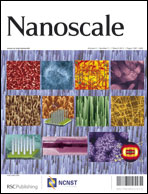Because bacterial flagella play essential roles in various processes (motility, adhesion, host interactions, secretion), studying their expression in relation to function is an important challenge. Here, we use atomic force microscopy (AFM) to gain insight into the nanoscale surface properties of two wild-type and four mutant strains of Bacillus thuringiensis exhibiting various levels of flagellation. We show that, unlike AFM in liquid, AFM in air is a simple and reliable approach to observe the morphological details of the bacteria, and to quantify the density and dimensions of their flagella. We found that the amount of flagella expressed by the six strains, as observed at the nanoscale, correlates with their microscopic swarming motility. These observations provide novel information on flagella expression in Gram-positive bacteria and demonstrate the power of AFM in genetic studies for the fast assessment of the phenotypic characteristics of bacterial strains altered in cell surface appendages.

You have access to this article
 Please wait while we load your content...
Something went wrong. Try again?
Please wait while we load your content...
Something went wrong. Try again?


 Please wait while we load your content...
Please wait while we load your content...